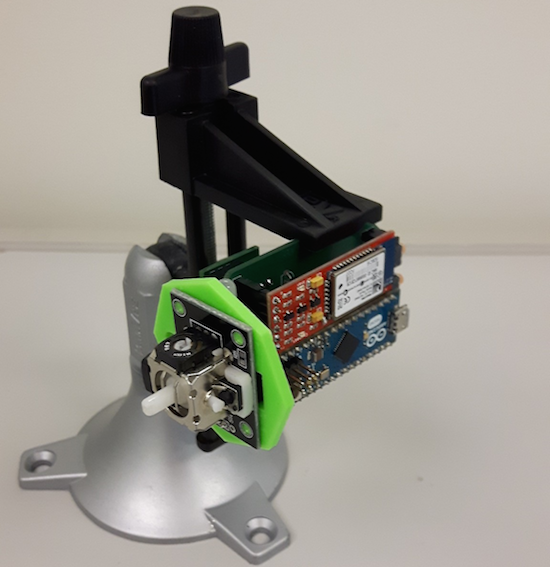
From ITP student Justin Lange:
I grew up with my Dad’s songs. Some of my first memories are of him and my Mom singing to me and my siblings. A bad fall last winter left my Dad with a dislocated shoulder and detached nerves. His function in his left arm remains very limited. And he sure can’t play guitar.
I thought,’how about I just build something to allow him to get back to his songs?’ Something of a Luddite at heart, he was a little slow warming up to the idea of an electronic device interfacing between him and an acoustic instrument. Furthermore, he was understandably a bit pessimistic; he said, “Justin, that sounds like a great idea if you’ve got a ten-million dollar research budget behind you, but I just don’t think what you’re talking about is possible”. I said, “let me see what I can do”.
Justin’s device, dubbed the Folkbox, has rows of buttons mounted beneath the neck of the guitar that play chords when depressed. The buttons are hooked up to solenoids that depress the proper strings, allowing the user to play a multitude of different chords.
The interface can be easily rebuilt to allow musicians with other disabilities to play as well. For example, someone who has no use of one hand can have a foot pedal array to play chords.

Justin plans on continuing work with the Folkbox, adding an even larger array of chords it can play, and rebuilding the enclosures in acrylic.








 Sreyash's simple concepts could be very helpful to those with vision impairments.
Sreyash's simple concepts could be very helpful to those with vision impairments.





